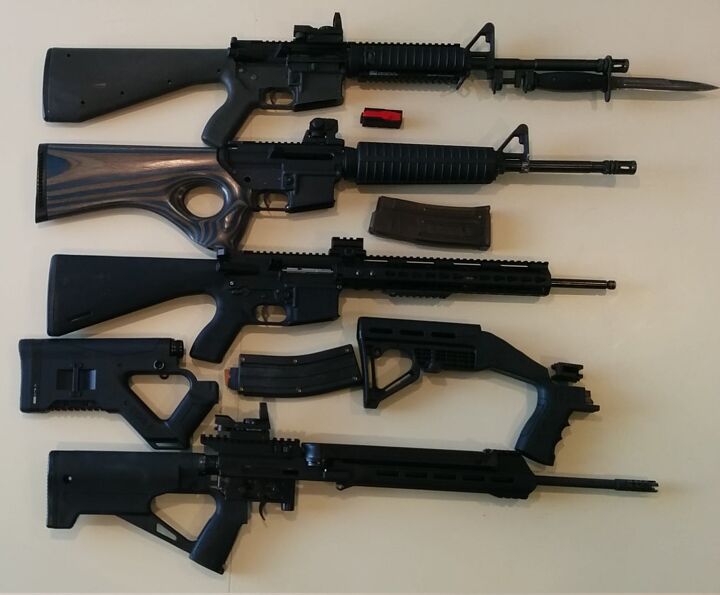The Assault Weapons Ban of 1994 To 2004 made me a thumbhole stock nut. Why? Thank California, which initially allowed thumbhole stocks as a compliant part. Now, it is just a finger shelf away from a bumpfire stock, and it can reinforce weak plastic lowers – factory-made, 80% builds, 3-D printed, or cast. Trigger Jig rifle builds also use thumbhole stocks. And finally, there’s that thumbhole style.
The Many Faces Of Thumbhole Stocks

Karl Nill-Griffe at nearly 26 oz, and A2 length
The Karl Nill-Griffe stock is consistent with early AR thumbholes. Similar to the discontinued Bell & Carlson, the safety detent spring sits in a blind hole, like any AR grip, which works for installation and function. Removal, not so much, as the stock slides off the buffer tube – which chops the safety spring in half.
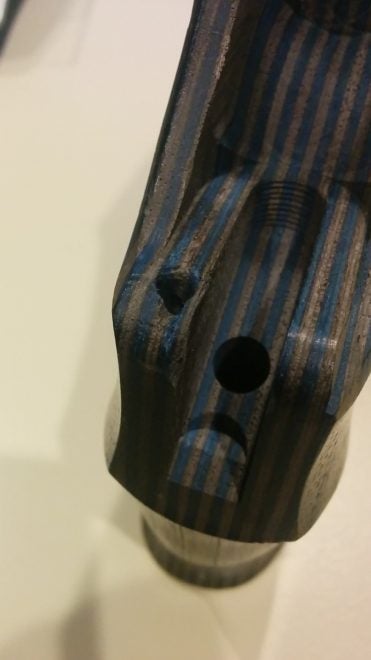
Damage to the safety spring detent hole from repeatedly removing the stock
Hera’s German engineers looked at the problem, and said we can do better – and they (kind of) did. Hera put the safety detent spring inside a removable rubber sleeve. This prevents the safety spring from being chopped, but it means the spring is held in with a piece of rubber. While I’ve had no issues with it, it’s not confidence-inspriring, and it feels a little flimsy, particularly when you’re spending $100.

Hera’s weak safety spring “condom”, next to the Chinese adjustable safety tension screw
The Chinese engineers at NcStar have probably bettered the Germans. Not only do they have a better design altogether, it provides a feature no other AR stock or grip has ever provided to my knowledge – adjustable safety detent spring tension. The stock comes from the factory with a smooth through hole in the pistol grip and a self tapping barrel screw. Just screw it in until you have the desired tension on the spring, giving anywhere from a sloppy to an absolutely crisp safety operation. For disassembly, just unscrew it and drop the spring into your hand.

Adjusting safety tensioni
The Karl Nill-Griffe is typical of the AWB first generation thumbhole stocks, using a full length rifle buffer tube. Installation is similar to an A1/A2 rifle stock – the stock itself holding the takedown detent spring at the rear of the receiver. The pistol grip portion, as mentioned, holds the safety detent spring, making it a bit tricky as you slide the stock on the buffer tube. But once you get it on, just screw in the pistol grip screw (use a long screw, not an Anderson short), and tighten the hex screw in the buttpad into the buffer tube.
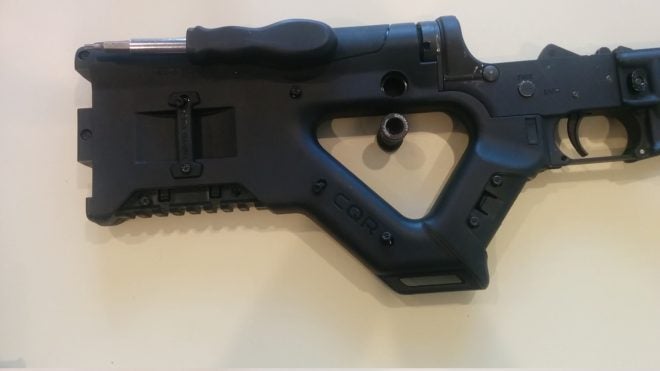
Remove 12 screws
Hera Arms suggests you use a mil-spec diameter carbine tube in their stock. The two halves clamp tightly to a mil-spec buffer tube when you screw them back together, but a commercial diameter tube will fit as well. An entry-length tube will work, but won’t be clamped by the stock. The Hera Arms stock is made nicely in two halves, with spare screws for decoration on the left side. My advice is to ignore the instructions, completely disassemble it for installation, and lay the receiver and extension/buffer tube into the right half – get the safety and grip screw sorted out then. Then rotate the left side in from the clips on the top, and screw it all back together using the screws on the right side of the stock.

Inside of Hera stock with an entry-length buffer tube on the lower, a commercial diameter above. Below, the shorter NcStar with a mil-spec tube
Since the NcStar stock is only $30, a quarter the price of the Hera, I wasn’t expecting a lot from the Vism BlastAR. Not only was it in nicely cut and glued foam, there were 3 hex wrenches, a flat-bladed screwdriver, and proper instructions – everything one needs to install it. While a commercial buffer tube won’t fit the BlastAR, I did find an entry-length tube will fit – and the hole is already cut in the rear of the stock for the proper bolt. Otherwise, follow the instructions – it is much easier to install than the Hera.
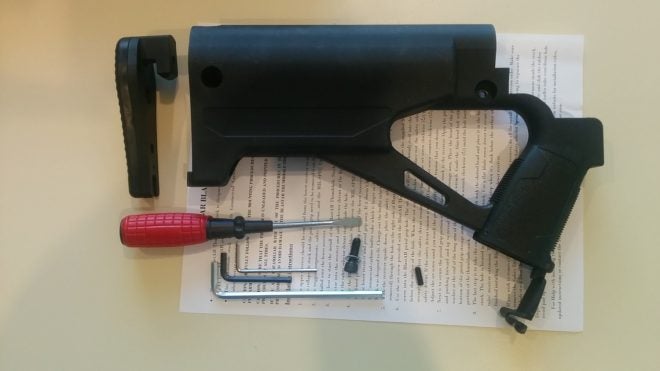
You get a lot for $30

Commercial diameter receiver extensions won’t fit the NcStar
On to physical characteristics: The Karl Nill-Griffe is an A2 length wood stock, weighing 25.8 oz. It’s perfect for your welded steel lower and buffer tube. Add a steel butt plate – then after bayoneting, you can buttstroke without bending the buffer tube.
The Hera Arms, mostly hollow, is the lightest of the 3 at 16.0 ounces, and comes in at A1 length. Hera does offer extensions for those descended from orangutans. Though no storage, it does have a bottom Picatinny rail for monopods. For a .50 BMG upper, you can reinforce it internally with epoxy and steel rods. In ban-states, Hera will supply an aluminum plate sealing the evil thumbhole.
The NcStar is the shortest of the 3, and the middleweight at 17.6 oz. The sliding opening to the rear storage promises future extended buttpads. The pistol grip storage compartment is handy, albeit neither will take Magnetospeed’s tiny 3-shot magazine.
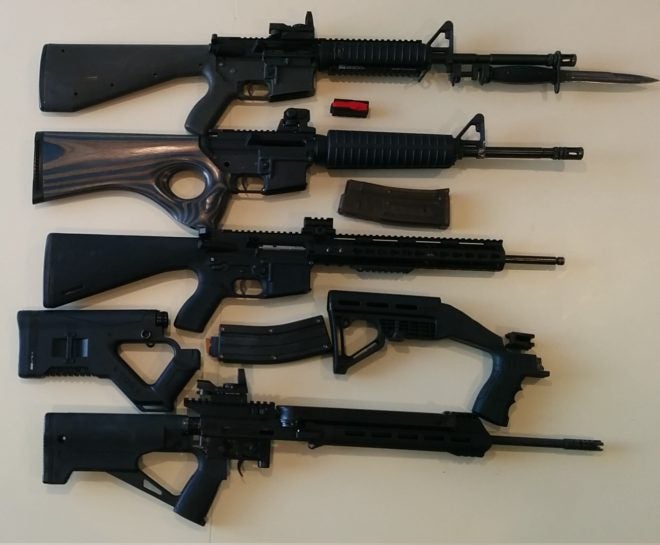
If you’re just starting out in the thumbhole stock world, the NcStar is probably for you. It features excellent safety spring arrangement, all the tools you need, and solid construction. If you want a longer length, lighter weight, more expensive, or live in a ban state? Take a look at Hera Arms. For the ultimate AR, added weight & cost be damned? Karl Nill-Griffe.
- Karl Nill-Griffe’s thumbhole for the AR is available @ their shop: http://us.nill-shop.com/Thumb-Hole-Stocks/AR-15-Thumb-hole-stock-ergonomic-pistol-grip-finger-grooves
- Hera Arms, CQR thumbhole or ban-state non-thumbhole: https://www.hera-usa.com/kopie-von-h3-2
- NcStar Vism BlastAR: https://www.opticsplanet.com/vism-ar-blastar-thumbhole.html among other retailers.
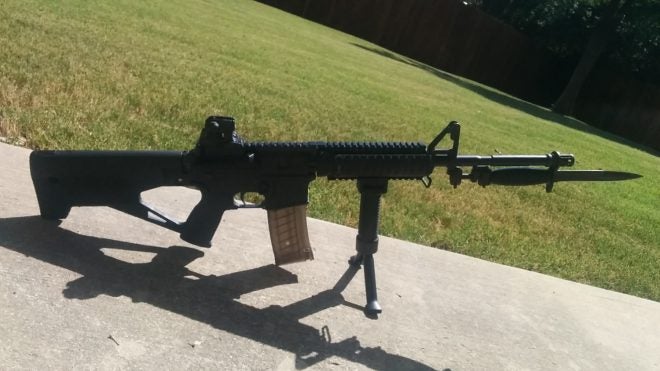
Chinese bayonet drill
 Your Privacy Choices
Your Privacy Choices
